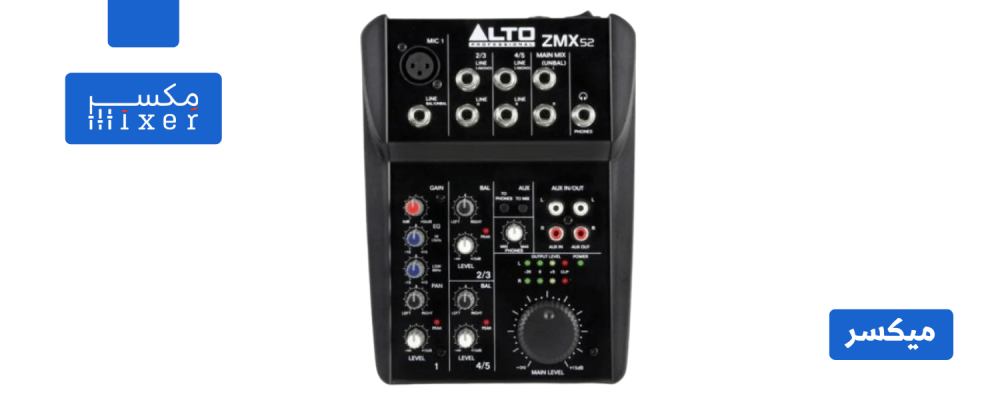introduction :
An audio mixer is an essential electronic device in the world of audio, used to collect, modify, and distribute audio signals from multiple sources. Whether you are a music producer, broadcaster, event organizer, or even an audio enthusiast, understanding an audio mixer is crucial to achieving the best possible sound quality.
What is a mixer ?
Simply put, an audio mixer is a control panel that allows you to combine multiple different audio sources, such as microphones, musical instruments, and voice recordings, into a single audio channel. You can control the volume of each source, apply different audio effects, and distribute the final audio signal to speakers or recording devices.
Mixer ingredients:
The audio mixer consists of several basic components:
- Input Channels: Each channel represents an independent input to which a single audio source can be connected.
- Channel Gain: Controls the volume level for each channel individually.
- Channel Effects: Allows you to add audio effects such as echo, compression, and distortion.
- Sum Bus: Combines signals from all channels and allows you to adjust the overall volume level of the mix.
- Phantom Buttons: Provides the electrical power needed for condenser microphones to operate.
- Listen Out: Allows you to hear the mix before sending it to speakers or recording devices.
Mixer types:
- Small mixers : Used in homes or small studios, they have a limited number of inputs and channels.
- Large mixers : Used for parties and large events, they contain a large number of inputs and channels, and provide more options for controlling the sound.
- Digital Mixers : Use digital technology to process sound, providing more flexibility and advanced features.
How to use mixer:
Using an audio mixer requires some technical skills, but the basics can be easily learned. Here are some basic steps:
- Connection: Connect different audio sources to the input channels on the mixer.
- Gain Adjustment: Adjust the gain level of each channel so that the sound is clear without distortion.
- Add effects: Use channel effects to improve audio quality.
- Signal Mixing: Adjust the volume level of each channel on the sum bus to achieve the desired mix.
- Monitoring: Listen to the mix with headphones or speakers to ensure its quality.
Mixer uses:
Audio mixers are used in many applications, including:
- Music production: recording and editing music.
- Broadcast: Radio and Television.
- Conferences and meetings: strengthen the sound and improve its quality.
- Live events: concerts and theatre performances.
- Podcast: Record and edit podcasts.
Conclusion:
An audio mixer is a powerful tool that can help you achieve the best possible sound quality in a variety of applications. By understanding the basics and how to use a mixer, you can create a professional audio mix that meets your needs.
Read more:




